Key takeaways:
- Building a sense of community is crucial in remote teaching, using tools like breakout rooms to foster personal connections among students.
- Understanding and accommodating diverse student needs, such as providing flexible deadlines, enhances their learning experience.
- Incorporating interactive elements and multimedia resources keeps students engaged and encourages deeper discussions about their spirituality.
- Maintaining a structured routine, like starting sessions with reflections or prayers, fosters a supportive learning environment in virtual classrooms.
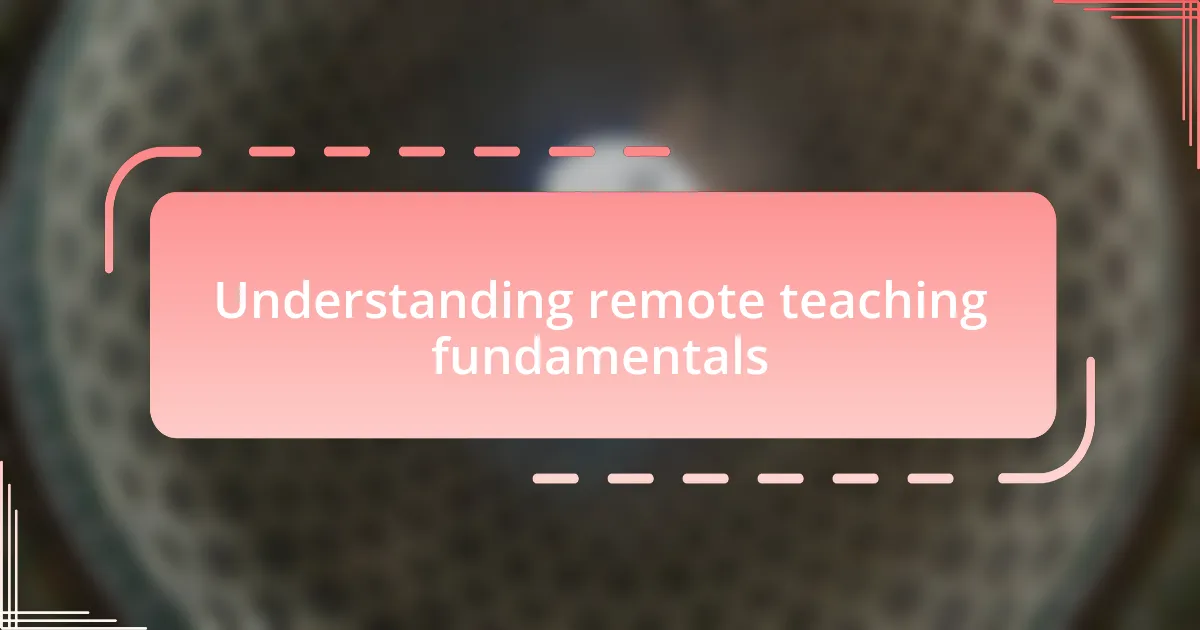
Understanding remote teaching fundamentals
Remote teaching fundamentally shifts how educators interact with their students. I remember my first online class; it felt as if I was speaking into a void. I quickly learned that fostering a sense of community, even virtually, is crucial. I began using breakout rooms, which allowed students to connect more personally, creating an environment where they felt more at ease sharing their thoughts. Have you ever noticed how much richer conversations can become when students feel comfortable with one another?
The technology we choose plays a vital role in this new landscape. I once struggled with a platform that was too complex for my students, leading to frustration instead of engagement. After switching to a more user-friendly interface, I observed not just better participation but also an increase in the quality of discussions. Isn’t it fascinating how the right tools can make such a significant difference in learning outcomes?
Moreover, understanding the diverse needs of students is pivotal in remote education. One day, a student reached out to me, sharing the challenges of learning in a noisy household. This realization prompted me to become more flexible with deadlines and offer personalized resources. How do we accommodate such varied environments to ensure every student can thrive? By being empathetic and adaptable, we can bridge the gap that distance often creates.
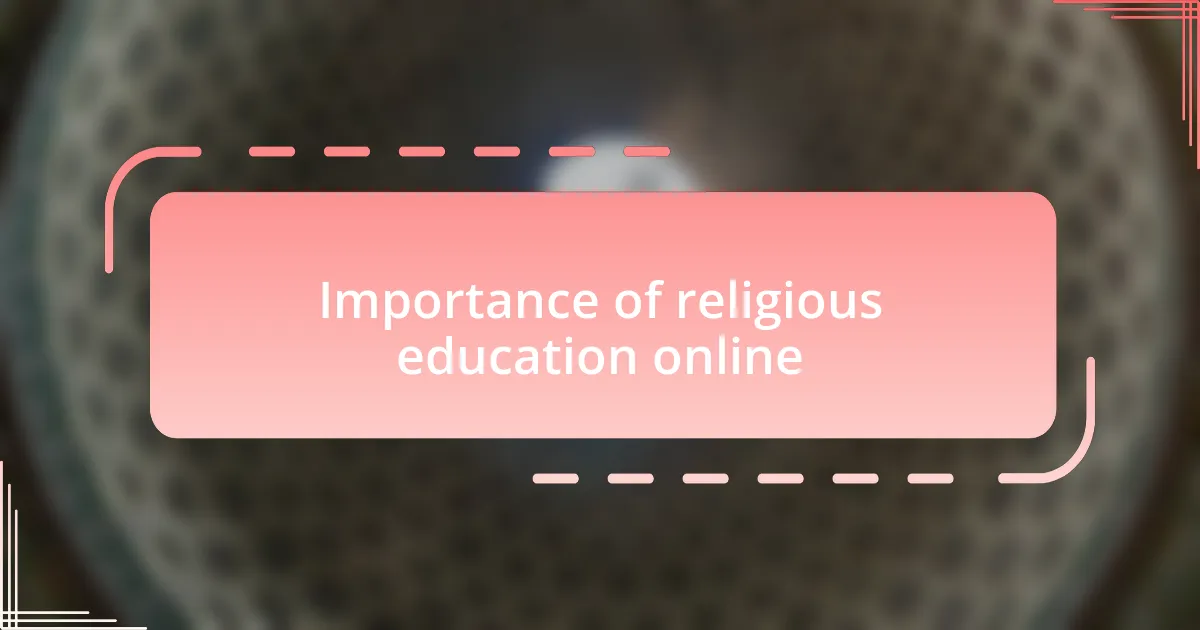
Importance of religious education online
Religious education online plays an essential role in nurturing spiritual growth and community connection. I recall a memorable online session where students shared their faith journeys, creating a powerful moment of vulnerability and understanding. When students can express their beliefs in a safe digital space, it fosters not only personal reflection but also a sense of belonging. Wouldn’t you agree that feeling part of a community enhances one’s faith?
Moreover, the accessibility of online religious education cannot be overstated. I often think about students who may not have local resources or supportive environments for their spiritual exploration. With virtual classes, they can engage with diverse perspectives and teachings from anywhere in the world. Isn’t it amazing how technology can break geographical barriers, allowing students to explore their faith on a global scale?
Finally, online platforms enable us to blend traditional teachings with modern tools. For instance, I’ve successfully incorporated multimedia resources like podcasts and video discussions, which have enriched our lessons. I was amazed at how engaged students became when they could see and hear conversations with inspiring religious leaders. Have you noticed how integrating different formats keeps lessons fresh and appeals to various learning styles? It’s a wonderful way to keep the essence of religious education vibrant in a digital space.
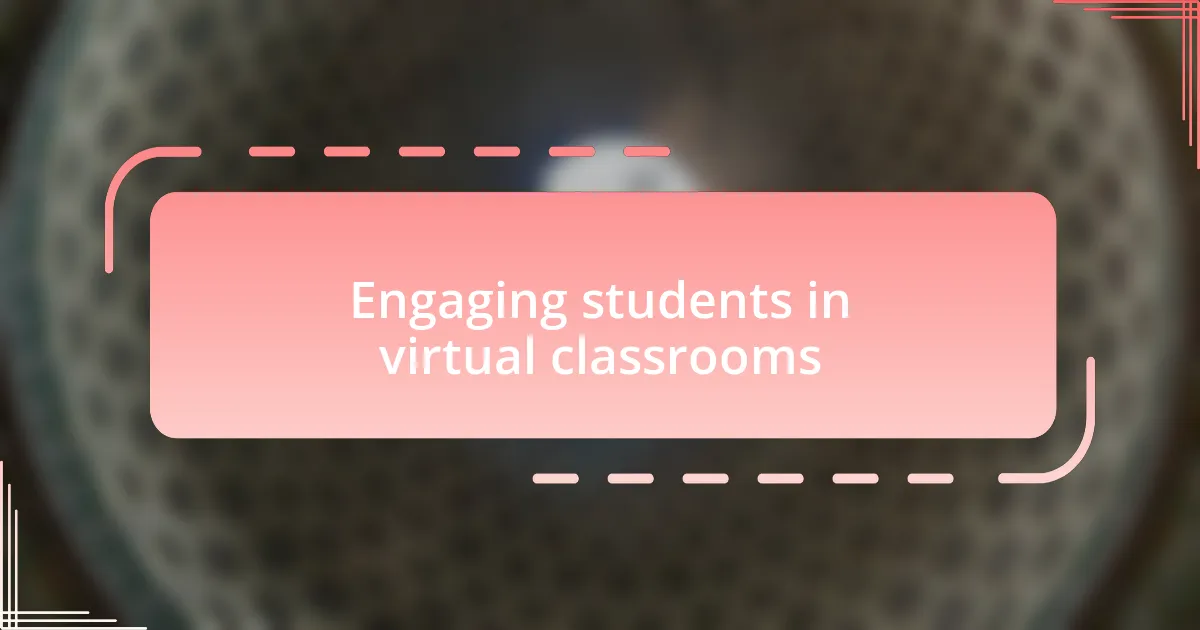
Engaging students in virtual classrooms
Engaging students in virtual classrooms requires more than just delivering material; it’s about creating a connection. I remember a class where we used breakout rooms to discuss challenging moral dilemmas from various religious perspectives. Watching students open up, debate, and genuinely listen to one another felt invigorating. Isn’t it incredible how a simple change in format can foster community?
In my experience, incorporating interactive elements can transform passive observers into active participants. For instance, I often invite students to create digital prayer journals using shared documents. The excitement in their voices as they share reflections or art linked to their prayers is palpable. Have you tried allowing students to express their spirituality creatively? It often leads to deeper discussions and personal revelations that can be profoundly moving.
Also, don’t underestimate the power of live polls and quizzes during lessons. When I introduced quick surveys to gauge students’ feelings about the topics we were covering, the results sparked lively discussions. Seeing their thoughts visually represented often led to unexpected insights. Wouldn’t you agree that real-time feedback not only enhances engagement but also empowers students to take ownership of their learning?
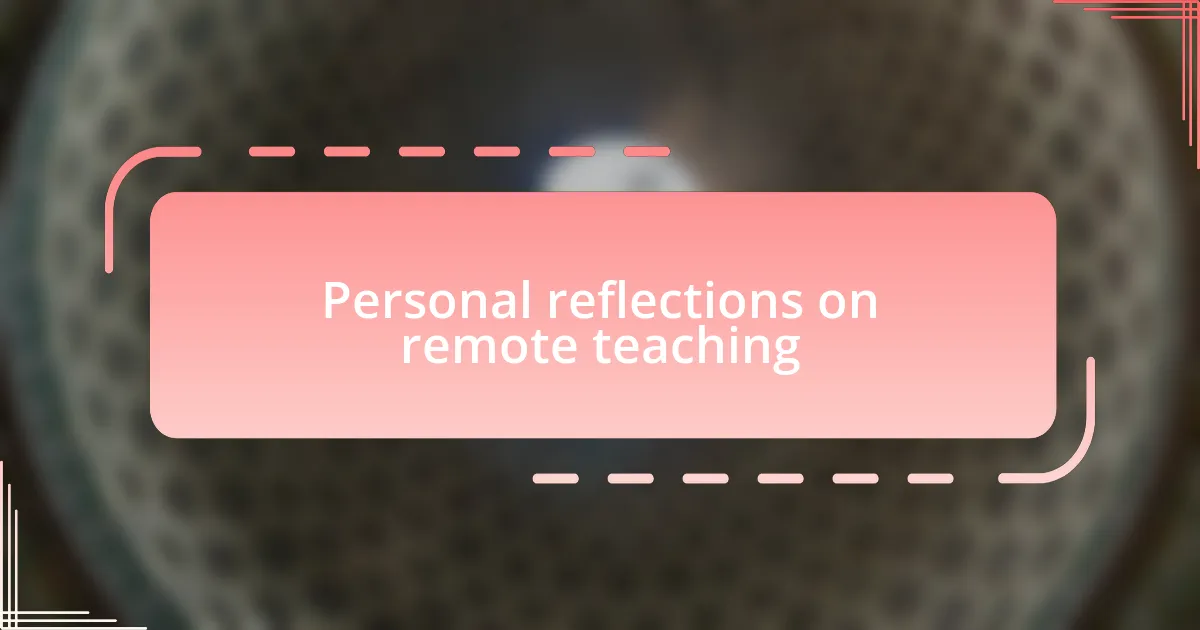
Personal reflections on remote teaching
Reflecting on my journey in remote teaching, I realize that building relationships with students has taken on a different dimension. One poignant moment that stands out was when a student shared a personal experience related to a theme we were exploring. Their vulnerability created an atmosphere that encouraged others to be open too. Have you ever noticed how sharing personal stories can lead to profound moments of connection in an otherwise digital space?
I’ve also grappled with the challenges of maintaining engagement during online classes. There was a week when the energy felt particularly low. So, I decided to try something different: I encouraged students to bring an object from home that represented their faith or belief. The enthusiasm they exhibited while sharing these items was a revelation. It struck me then how meaningful connections often spring from the simplest ideas. Don’t you find that tangible experiences can spark enthusiasm even in a virtual classroom?
Lastly, the spontaneity of remote teaching often leads to unexpected learning moments. I vividly remember a session when a technical glitch caused a delay. Instead of panicking, I invited students to discuss their favorite religious texts while we fixed the issue. What started as a hiccup blossomed into a rich dialogue, reminding me that flexibility and adaptability are key in this teaching environment. Isn’t it fascinating how sometimes the best lessons emerge from the least likely circumstances?
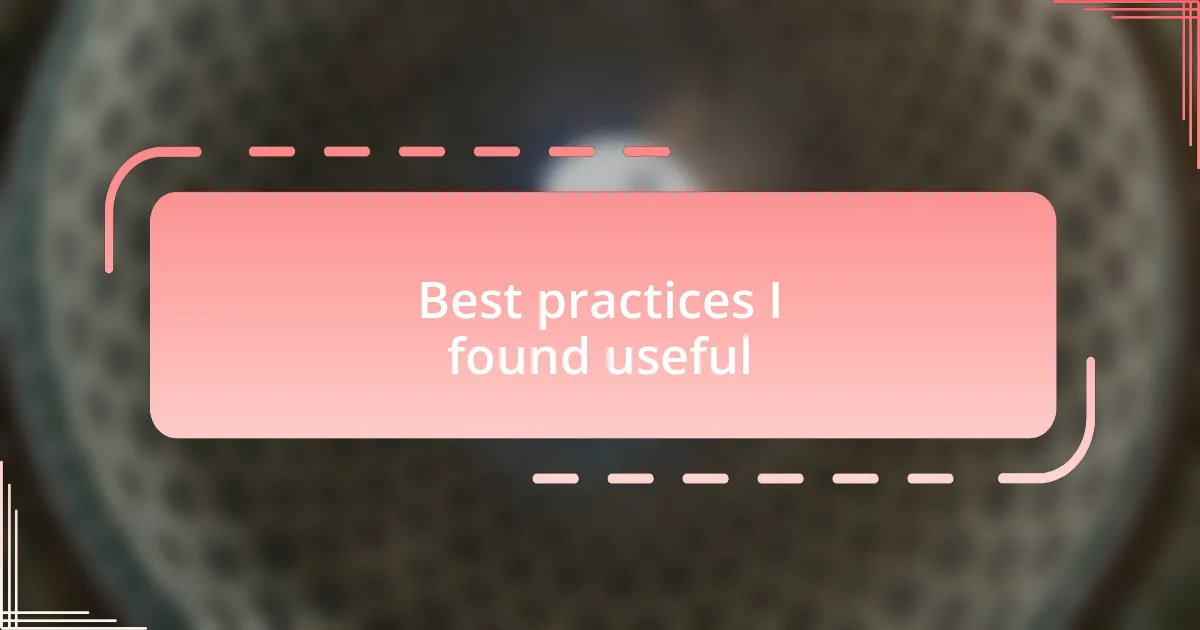
Best practices I found useful
When it comes to creating an engaging online classroom, I’ve found that utilizing multimedia can make a significant difference. For instance, I once shared a video featuring a community service project related to a religious theme we were discussing. Students were not only captivated but also inspired to share their own experiences connected to service, which sparked a wonderful conversation. How do you think visual storytelling can enhance understanding in a remote setting?
Another best practice I’ve embraced is the use of breakout rooms for small group discussions. I remember a lesson where I placed students into smaller groups to discuss the significance of rituals in their own lives. The dynamic shifted remarkably; students who typically held back in larger settings flourished in these more intimate spaces. This made me realize how critical the social aspect can be, even in a virtual format. Have you experienced how the right environment can change the way students engage with the material?
Finally, it’s essential to maintain a sense of routine and structure to foster a comfortable learning atmosphere. For example, I began each session with a moment of reflection or a short prayer, grounding everyone before diving into complex topics. This ritual not only provided stability but also created a shared space for students to connect on a deeper level. Isn’t it interesting how such small acts can cultivate a sense of community in a seemingly disconnected world?